How to care for an electric bike
I love my horse, comb her hair smoothly ...
Have you noticed that a dirty car is driving worse and a computer is working worse? If you think that it seems to you and this is just your emotional perception, then you are mistaken. The smallest dirt or dust can become fatal for electronics, and a weakly tightened nut in a car can be fatal not only for the car, but also for life. However, all this applies to any transport, including bicycles. And especially e-bikes, which combine the design of transport and the advantages of electronics, which means they also accumulate typical vulnerabilities.
Recently in our blog there was a story about how the process of assembling an electric bike goes if you order it unassembled - for example, Twitter Mantis-E0. Today, as promised then - a couple of words about caring for an electric bike - using the Twitter AM26-E1 as a double-suspension. By the way, most tips will be true for regular bicycles, although there will be nuances. Even if you bought a bicycle in assembled condition, this does not mean at all that you can immediately sit down and ride it. Well, the second popular misconception about the new bike is that it is new and you can not take care of it for a long time. If you ignore the nuances, then you can collect a whole bunch of all kinds of jambs, which at best will multiply by 0 all the pleasure of riding.
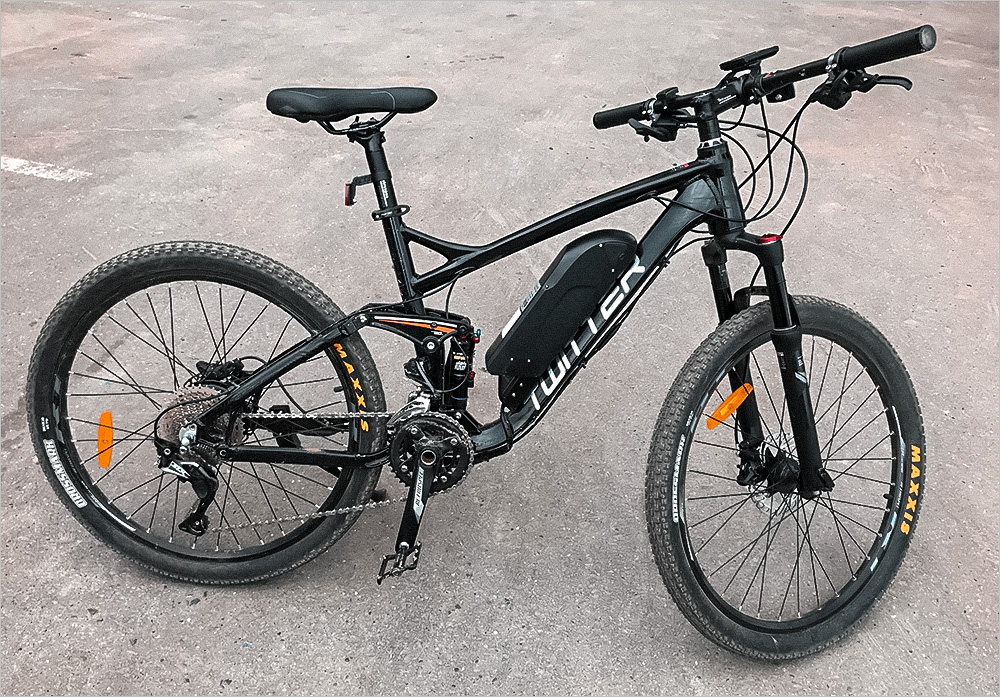
| A few words about Twitter AM26-E1 The flagship model in the arsenal of Twitter's electric bicycles. We did not review this model, because it is the most expensive (the cost is 144 990 ₽), but at the same time it is the most sophisticated: a solid aluminum frame, an air rear shock absorber and an oil-air front; Shimano XT and SLX body kit, SLX hydraulic brakes, 350 W motor and LG 468 Wh battery - all this is enough for long pokatushek, and on any surface. 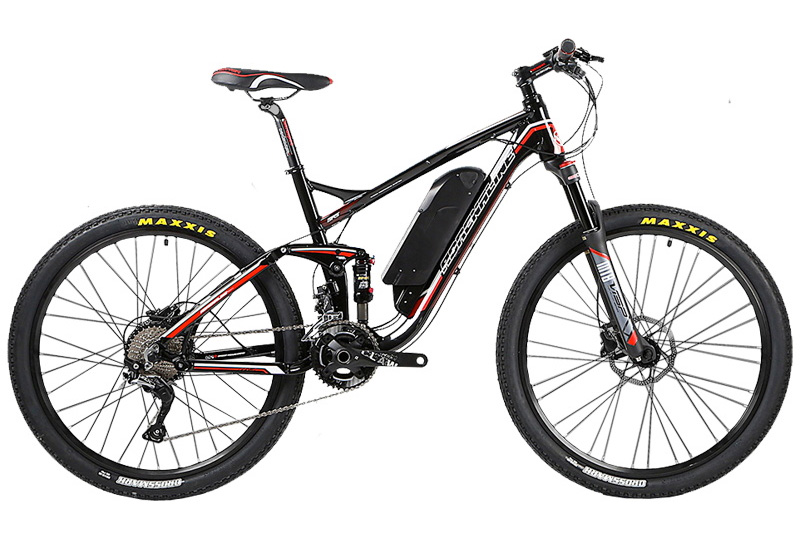 → Full specifications |
Customization for yourself
Before driving, any motorist should always start by adjusting the landing: seat → legs → backrest → steering wheel → headrest → mirrors. The same story is with a bicycle, but simpler: before climbing on an iron horse, you need to make sure that the wheel does not fall off, the steering wheel does not turn, etc. You need to configure the bike for yourself: the position of the saddle and handlebar, as well as all the handles / switches on it. If a wrong landing in a car can forgive some flaws and will allow you to get from point A to point B, then with a bicycle it will be different: a constant incorrect landing will negatively affect your health (and it is more expensive than any electric bicycles) - fatigue of the back, legs, wrists, neck. Well, security, of course.
You need to buy a bicycle with a frame size so that it matches the growth of the cyclist: there are plenty of similar plates on the network. In the lineup of Twitter electric bicycles there are models with frames of 15-17 inches, as well as the "universal" in the TW-E9L , which we already wrote about.
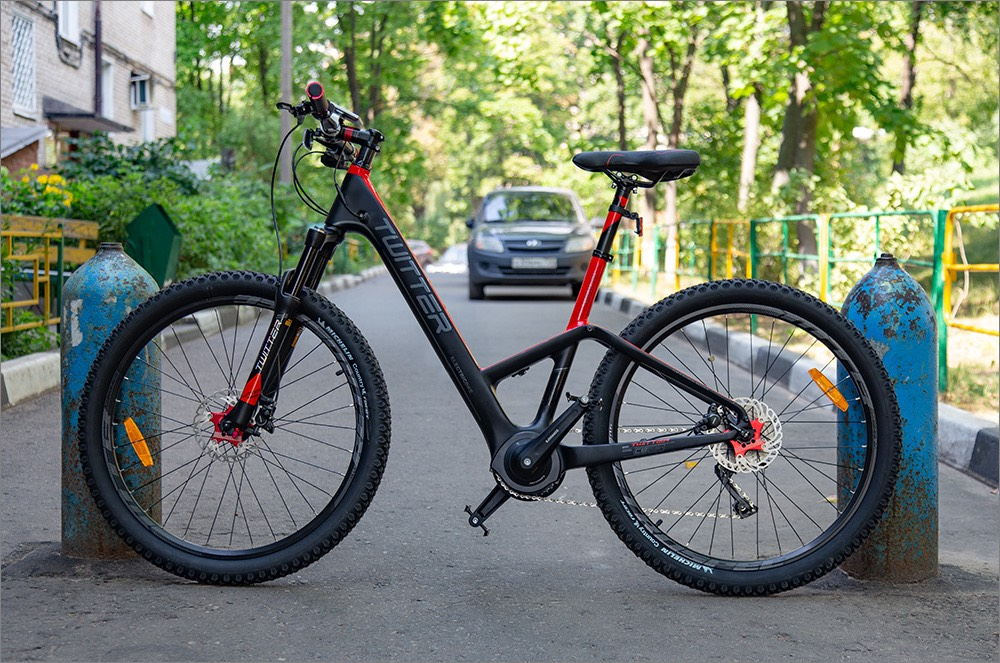
There are several methods for adjusting the height of the saddle (google methods of Holmes, Lemond, 109%), but the most commonly used is the “heel method”: sitting exactly on the saddle, in the lower position of the pedal, your leg should be fully bent at the knee.
The fact that something is wrong with the steering angle will become clear after a long trip. The angle must be set so that during the movement the wrists do not “bulge” and do not strain when switching speeds and braking.
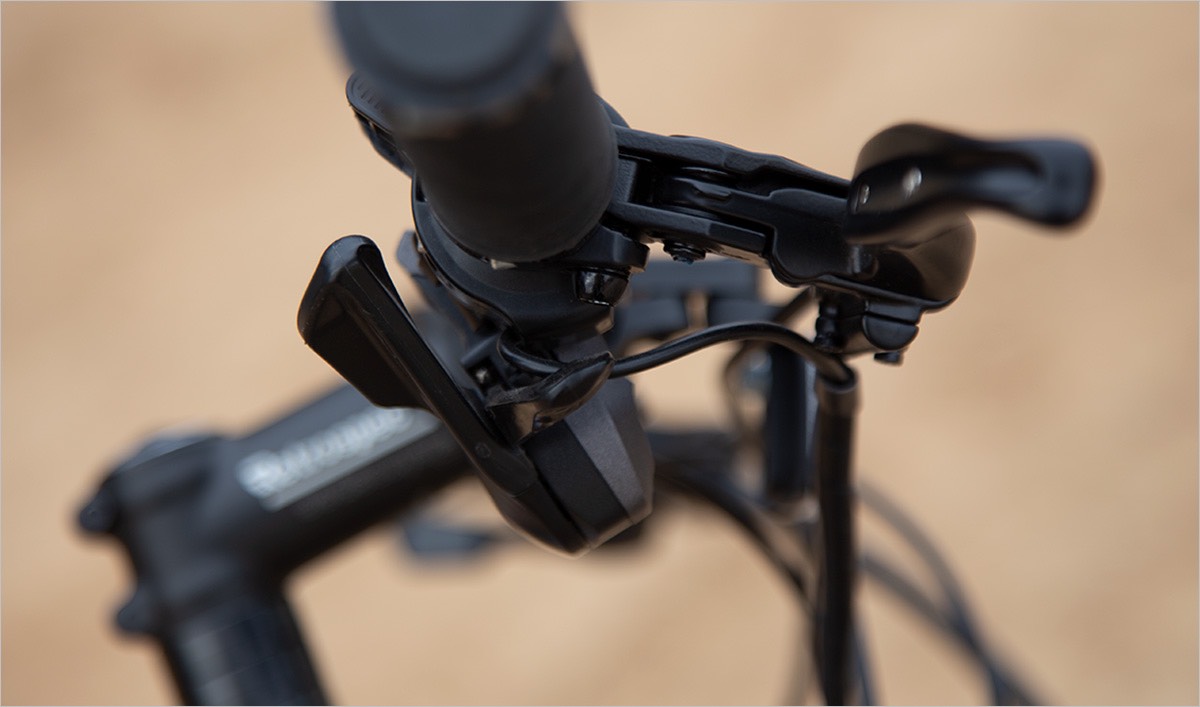
Well, the last: adjust the stiffness of the front shock absorber (if such a setting is provided - as, for example, on Twitter AM26-E1 ). It so happens that the fork travel is so large and light that when braking with the front brake, you can easily make a triple sheepskin coat.
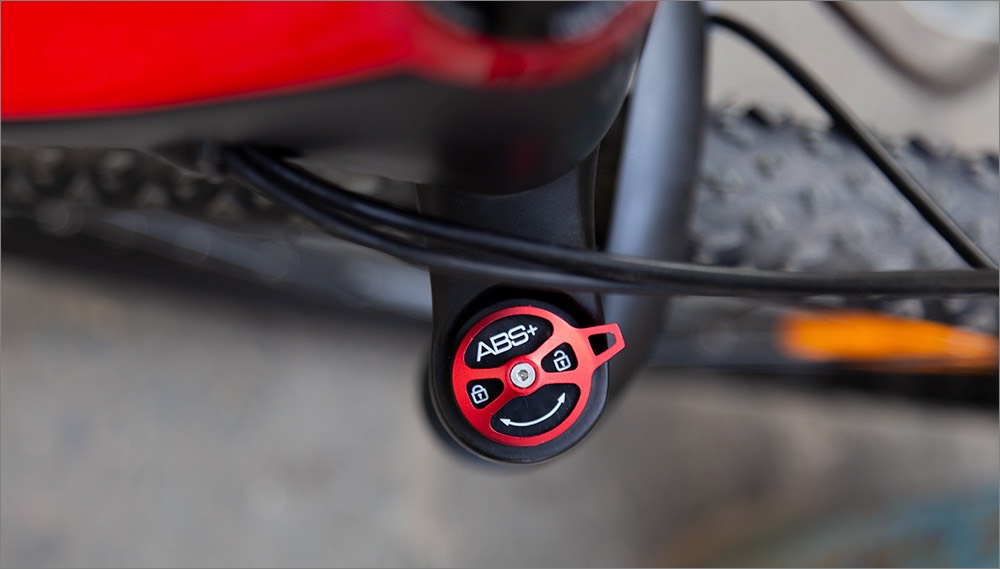
TO
A modern bicycle (and even more so an e-bike) is a complex technical mechanism. And he, like any other mechanism, needs maintenance. In this regard, it is not much different, for example, from a car, upon purchase of which you will be given a service book with regulated work. Change oil, filters, pads, discs, candles, shock absorbers, belts / chains, etc. - during operation, everything wears out or breaks down, everything has its own service life.
A bicycle is simpler than a car: regardless of the manufacturer, there is a fairly high compatibility in terms of components, you can almost always get the right one and the prices of any components are not so biting (if we are not talking about any professional products). Yes, and you need to change something not so often - in most cases you can get off with simple maintenance. Almost all the work does not require any special tools - a set of keys / hexagons / screwdrivers is enough.
In a good way, you need to check / maintain the bike components before each exit:
- Tire pressure (for MTB at least 2 atmospheres)
- Chain condition (contamination, lubrication, interference)
- Brakes (condition of disc and pads, clearance adjustment, condition of hydraulic lines, handles)
- Wheel mounting (pulling eccentrics), steering wheel and saddle
- Backlash (steering wheel, bushings, carriage assembly, connecting rods)
- Charge devices (headlight, taillight, main battery)
Below we talk about the main problems and how to solve them.
Gear shift
For many, the “star mechanism” is covered in a fog of ignorance and the only thing that is known about it is that it’s better not to poke your fingers there again. That's right :)
What problems are most common in this part of the bike? Flying chain and poor gear shifting.
The chain may fly off due to the lack of interference - in this case, it is easiest to remove one or more links. Twitter bike chains have a lock for opening (this is a more convenient option than a chain without a lock), however, there is no need to adjust the chain length - this is rather just advice for the future when it comes time to change it.

Also, the chain may fly off due to any deformation (in the chain or on the stars) during operation. For example, it is not recommended to drive at “extreme” speeds in which the chain goes awry (because of which it is stretched or frayed over time). That is, if a bicycle has 3 * 8 = 24 speeds, then in reality this does not mean at all that it will be possible to drive for a long time at all speeds: it’s just “harmful” to ride on some.
Well, the most common problem: the circuit flies due to unregulated switches. Both the front and rear derailleur have two cogs (sticking out or recessed in the case), signed as L (low, responsible for small gears - large stars) and H (high, responsible for large gears - small stars). These cogs determine the travel limit of the switching mechanism.

Twitter adjusting screws AM26-E1.
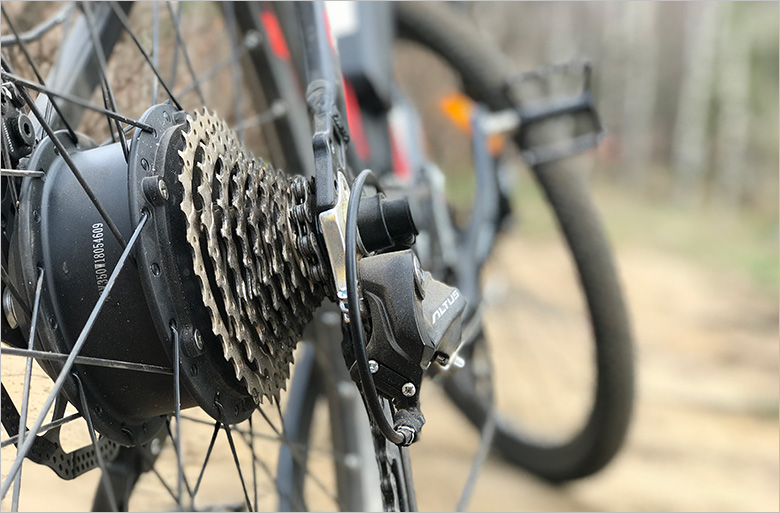
Twitter adjusting screws Mantis-E0.
Tuning starts at the slowest speed. The rear derailleur rollers should be in the same plane with the sprockets - if this is not the case, then turn the H-screw so that everything is smooth. Then we switch to low gears and turn the L-screw so that the roller and the sprocket are also in the same plane. This should be monitored: if the bicycle fell and the switching mechanism (foot) bent, it may happen that the chain does not just fly off - it will be much worse if at one of the speeds the foot switches “inside” the wheel, touches the spokes with all the consequences - then have to change half the bike :)

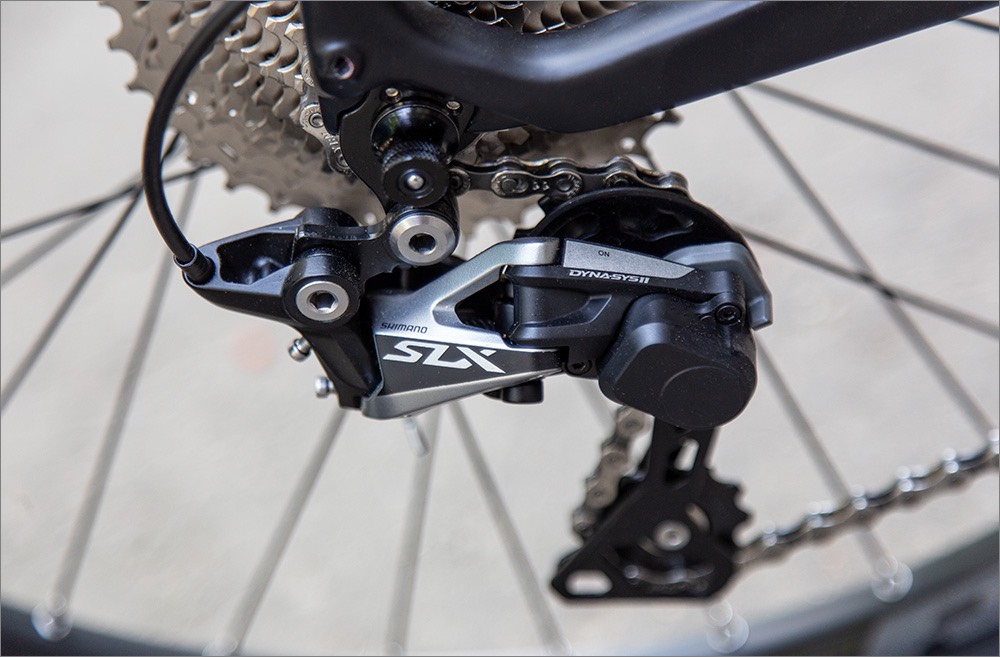
The front derailleur has the same cogs, the same rules are there: the switch frame should be in the plane of the stars, and the lower edge of the frame should be no further than 3 mm from the big star.



The L- and H-cogs of the front stars in the AM26-E1 are slightly recessed in the switch housing.
We do not specifically describe in detail the entire algorithm for setting speeds, because otherwise the whole article would be about them. But if you are a complete beginner and you have problems with speed switches or a chain, then now you know where to dig.
Chain
There are at least two reasons to lubricate a chain with a certain periodicity: 1) so it (and stars) will last longer and 2) so it will work quieter, without unnecessary creaks and clanks. With active skating, it is advisable to lubricate the chain once a week.

Clean chain

And there is already clearly a need for cleaning
To begin with, we take a newspaper - Komsomolskaya Pravda is perfect, although Moskovsky Komsomolets also has a lot of supporters. We lay it under the bike, in the area of the chain. We clean from dirt: you can use special brushes, but you can do with a regular rag. Then we take an oiler (as an option - a syringe with a thin needle or an aerosol), place it over the chain and squeeze it gently (so that the oil drips, but does not flow), while simultaneously pedaling (so that the chain moves). After lubricating the entire chain, it is advisable to spin the pedals for a couple of minutes, and then remove all the "excess" with a dry rag / napkin.
Do not forget that the chain is a consumable. Therefore, if everything has rusted after the winter, it is easier to replace the chain, rather than engage in resuscitation. The resource of the chains is different, on average 1000-2000 km, to determine the level of wear there is a special tool - a chain meter.
The brakes
It is believed that brakes were invented by cowards. That may be so, but still in our time it is better when complete order with the brakes is one of the key components of your (and those around you) safety. Now there are two brakes on bicycles - there are several types of them, but regardless of this, they should work properly. IS ALWAYS. Therefore, do not forget to monitor their condition - if the bike does not brake well, then you cannot pull it with maintenance.
All Twitter e-bikes have disc brakes, so we will not consider the option of servicing V-brake brakes. The brakes are installed “from the factory” even when the e-bike is purchased disassembled, and therefore “out of the box” they are set up (you only need to adjust the position of the brake levers on the steering wheel). But the nuances may appear during operation.

The most common problem is the creaking of the brakes (even if you just drive, not brake). If the creak appeared suddenly, then most likely the dirt got into the brake mechanism - it is quite possible that everything will “creak” itself. But if suddenly something like oil (for example, from a leaked fork) got on the brake pads (and first on the rotor), then you only have to disassemble / clean or buy new pads (the price is 500-1000 rubles per set).

If the creak is constant, then something is rubbing on something - the brake disc is on the pads, or the pads on the disc :) Both options do not benefit either the disc or the pads. The solution is simple: adjust the clearance between the brake disc and caliper, for which there are several bolts on the latter. Important: the gap between the block and the rotor should not be very large, otherwise the braking will be less effective.
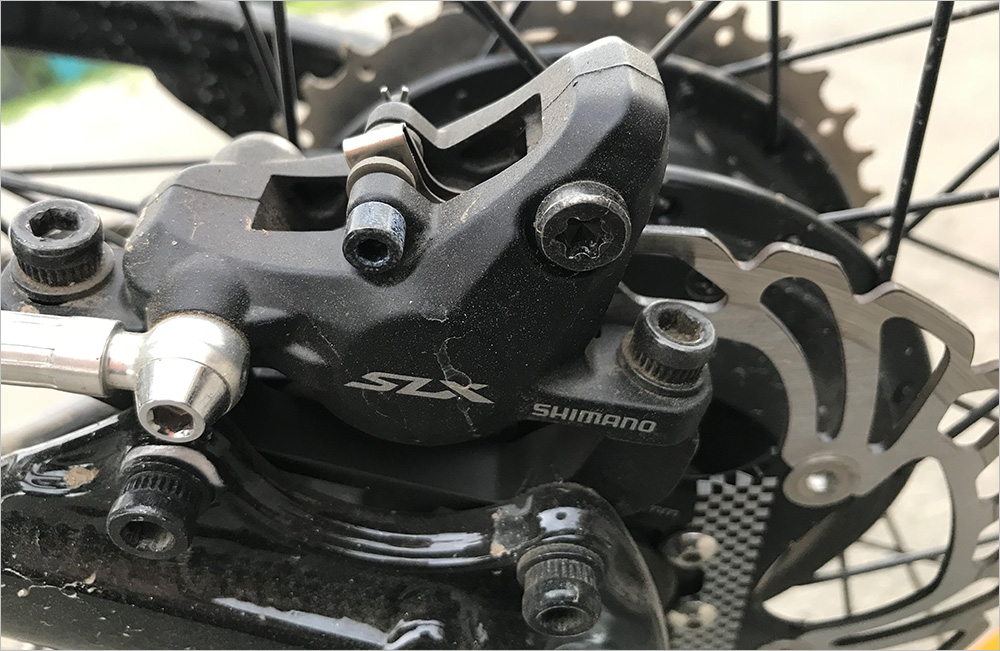
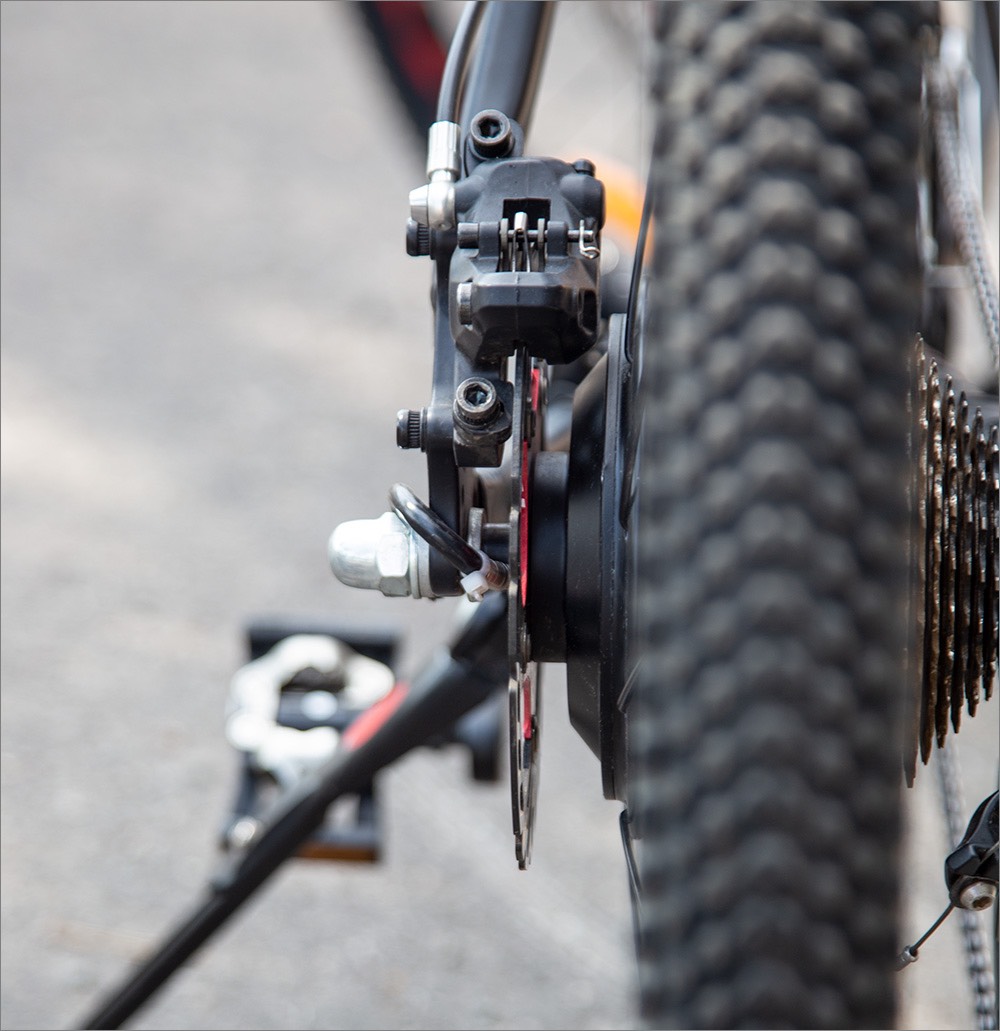
Worst option: a deformed brake disc (for example, as a result of a fall) - here, adjustment is unlikely to get by. To solve the problem, you will need a special key for editing disks, or a rotor replacement. It is sometimes possible to detect curvature “by eye”, in other cases it is enough to spin the wheel of the raised bicycle.

Battery
The battery is not only an important component of an electric bike, but also one of the most expensive :) The cost of a “box with a button” can easily amount to tens of thousands of rubles, depending on the tricked out thing.

Twitter e-bikes use LG lithium-ion batteries in various configurations. In almost all cases, the battery is removable - with the exception of the TW-E9L model, in which the main battery is hidden inside a carbon frame.

There are many publications on the topic of extending the life of batteries in the network - one of them is from Habr (it is surprising that the article has more than a million views). We quote tips from there:
- Do not overheat.
- Do not allow full discharge.
- Once every 3 months, fully discharge and charge the battery
- Use original charger
And add a few words from ourselves:
- Twitter bikes use both high-quality batteries and their controllers; during charging, protection against overvoltage, overcharge, overdischarge, overload, short circuit, overheat, and reverse polarity is provided. Therefore, it remains only to monitor the state of the battery outside of travel.
- With prolonged inactivity (for example, if you don’t ride in the winter and in the off-season), if you store your bike in a cold garage, it is advisable to remove the battery and store it at home in a semi-discharged state at a temperature of 15-20 degrees.
- Try not to ride at temperatures below -10 ° C.
If there are more tips on battery maintenance, then write in the comments.
Hygiene
It is hardly worth talking about how dirty a bicycle can be, even if you ride it in dry weather and on asphalt. Not to mention rainy weather and land. And if there are no large wings (almost always they need to be bought separately), then everything, no longer wash :)

Let's start with the fact that it is absolutely impossible to wash an electric bike. This is the AED - High Pressure Apparatus - this includes all kinds of Karcher and other equipment for car washes. “At maximum speed” a stream of water can easily seep even through the smallest slots and openings, although at low pressure it can easily damage not only the electrician, but even less sensitive components. Therefore , it’s better to cross out the option of “ dropping into a car wash for 5 minutes and washing everything for 50 rubles ” - even if everything works after washing, it’s not a fact that this will take a long time. If water leaks into the motor wheel or the controller unit, then various special effects can occur only after a while. As a result: “5 minutes and 50 rubles” can easily turn into an expensive repair.
If it is impatient, it is better to call in for a self-service car wash and very carefully wash only the dirtiest (for example, rubber-rim-spokes). But in no case do not give the bike to the washers, who in case of which will not incur any responsibility.
* * *
What then to use? As an option - use a medium-pressure apparatus. The meaning is the same - a jet under pressure, but not so destructive. There are battery models (the same Karcher), come with a small external compressor and battery powered cars. Surely there is something even less powerful with power from the paverbank or even the bike itself :) The downside of this option is still the cost, well, and the “bulkiness” of the solution.
What can be washed in this case: a fork, brakes (and completely), the entire frame, rim and rubber. The stars and the chain, if clogged with dirt - carefully, so as not to wash off the grease from them, although it is still better to update it later. Even more accurately - the motor-wheel, but it is better not to touch it (as well as the battery with the controller block, if they are separated). It is also advisable not to touch the attachments: flashlights, on-board computer, speed switches, etc.
* * *
The best, as it seems to us, option is to use removable full-sized wings so that a minimum of dirt flies onto the device; they can be washed even in the bathroom, even at the sink. And the rest - wet wipes. Yes, it will take more time, but you can "wash" anywhere: on the street, in the stairwell, but at least in the apartment. From the pros: firstly, it will turn out cleaner (rather than a jet of water), and secondly - wiping a centimeter by centimeter, you can carefully monitor the condition of all components and notice any anomalies (chips, scuffs, chatter, etc.) in time. d.).
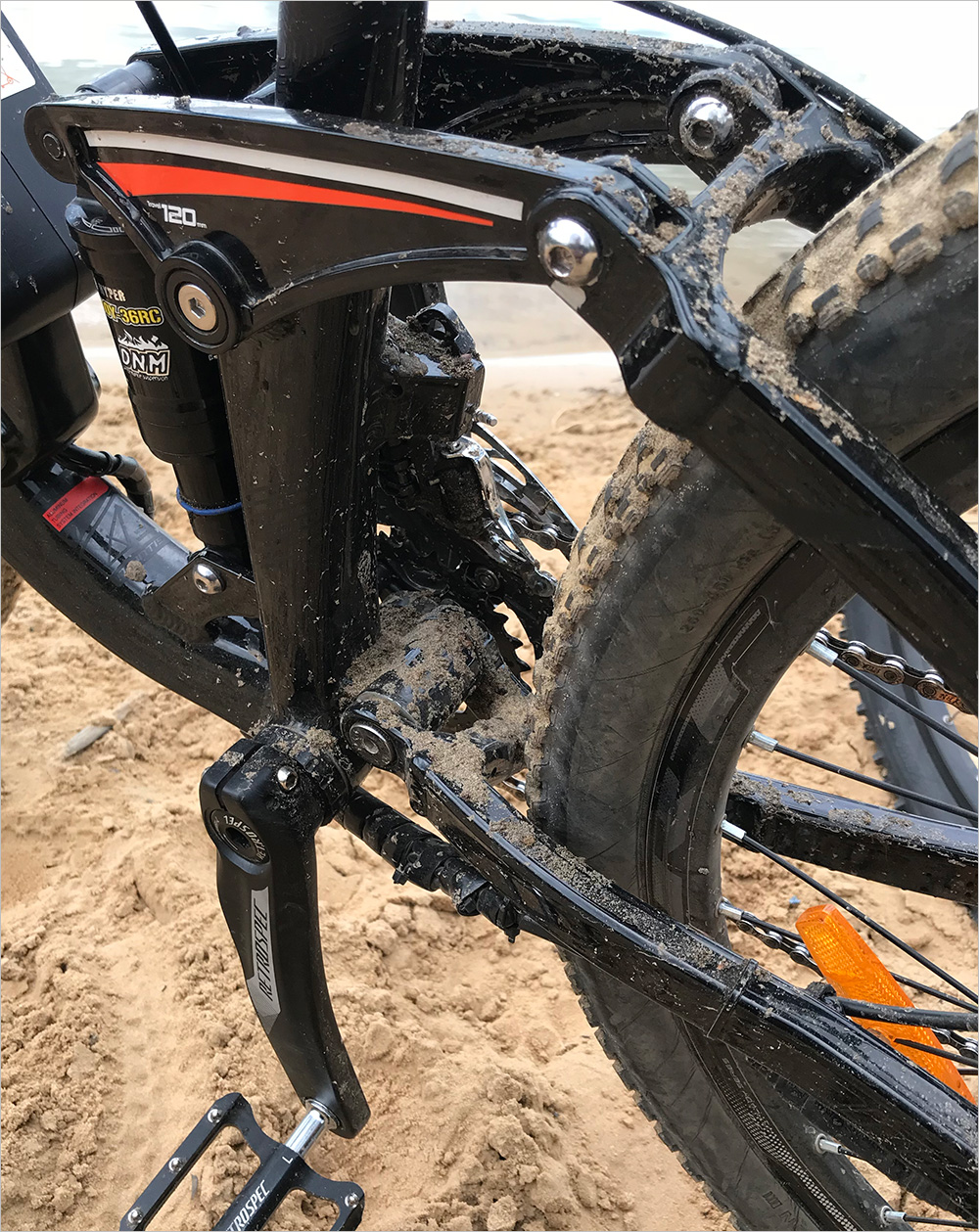
In some cases, wings will not help
* * *
By the way, there is (and is in demand) a service such as waterproofing electric vehicles. Usually more compact vehicles (scooters, monowheels) are subjected to it, but it can certainly be done for a bicycle (or rather, for its "sensitive" components). This may violate the warranty (as it will require analysis of the "filling"), but if everything is done correctly, you can ride even in rainy weather.
That's all. Share your tips on caring for your two-wheeled friends in the comments!
